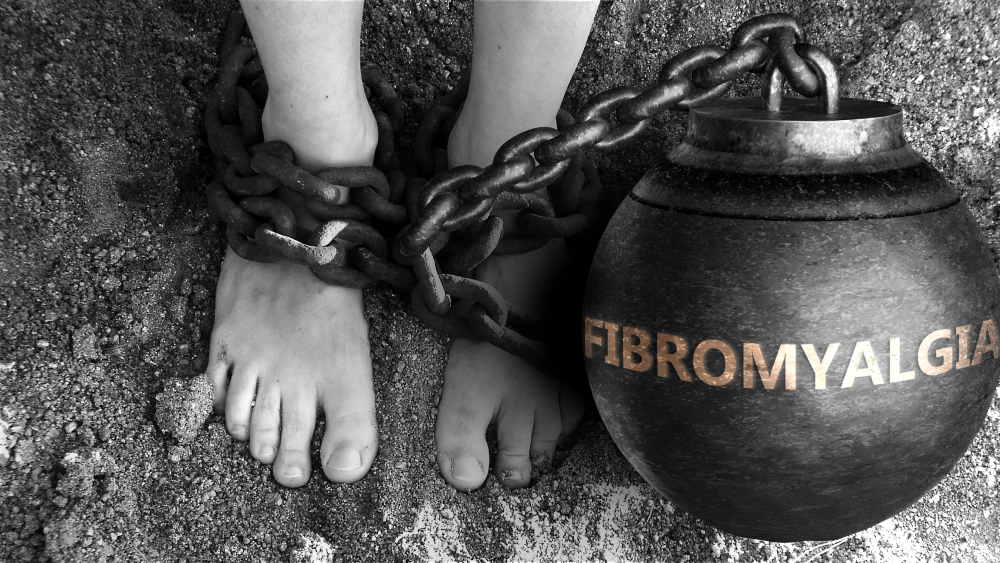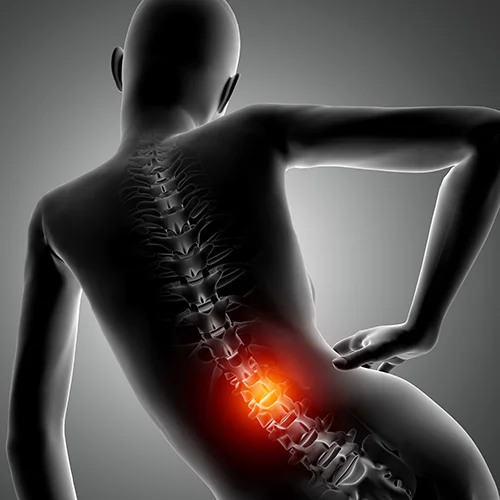Resources for Our Pain Management Patients
The Tucson Pain Management Doctors Who Care
What’s causing my pain?
To effectively manage your pain, it is crucial to identify the root cause. Various factors can contribute to pain, including injuries, illness, and the nature of the pain itself. Additionally, by understanding the underlying cause of your pain, we can develop a treatment plan that addresses the root of the problem and helps you find relief. Get in touch with our pain center today.
Questions and answers on common pain complaints
1: What is the best treatment for lower back pain?
There is no one-size-fits-all answer to this question, as the best treatment for lumbar pain will vary depending on the individual’s specific symptoms and medical history. However, some of the most common treatments for lower back pain include physical therapy, medication, and surgery.
Physical therapy is often used to treat lower back pain because it can help to restore muscle function and improve mobility. Medications such as ibuprofen or opioids can provide short-term relief; however, they may also have side effects such as drowsiness or dizziness. In severe cases, surgery may be necessary to address the underlying cause of the pain. Additionally, it’s important to note that surgical intervention should always be a last resort, as it carries its own risks and benefits.
2: What is the best treatment for neck pain?
Neck pain is a common problem that various factors can cause. Yet, finding the best treatment for your ailment is important if you suffer from neck pain. There are several different options available, and it’s important to choose the one that works best for you.
The first step is to identify the source of your neck pain. Is it due to an injury or strain? Are you experiencing pain on one side of your neck more than the other? Therefore, once you know the cause, you can start seeking out treatment.
One of the most common treatments for neck pain is exercise. Yet, working out your muscles and ligaments can help relieve some of the pressure on your spinal cord. You should start with gentle exercises and work your way up as needed.
If medication is necessary, there are several pain medicine options available at our pain management clinic.
3: What is the difference between chronic and acute pain?
Acute pain
This kind of pain comes on suddenly and is usually short-lived. You feel pain when you stub your toe or get a paper cut. Acute pain is sharp and severe but only lasts for a limited time.
Chronic pain
Chronic pain, on the other hand, is ongoing and persists for weeks, months, or even years. It can be caused by an injury or an underlying health condition, making everyday activities difficult.
While acute pain is a normal response to an injury or illness, chronic pain is often more complex than other pain-related conditions. Furthermore, this can have a major impact on your general well-being.
Medical Pain Management
Trusted Tucson Pain Management Doctors
At QLMC, we understand that pain can take a toll on your quality of life. That’s why we offer a range of pain relief options, from medical pain relief to therapeutic pain relief and interventional pain management. Our team of top pain doctors and primary care doctors, located in Tucson, AZ, is dedicated to helping you get back to living life to the fullest. With a variety of effective therapies at our disposal, we are confident that we can help you find the relief you need.

Treatment for chronic pain
At QLMC, we understand that pain can have a major impact on your daily life. That’s why our treatments are designed to help you reduce pain, restore functionality, increase mobility, and ultimately improve your quality of life. While we recognize that our treatments may not completely eliminate your pain, they can still play a significant role in managing your pain as part of a comprehensive pain management program in Tucson, AZ. By incorporating these treatments into your overall pain management plan, you can expect to see real improvements and a better quality of life.
We understand pain
The professionals here at QLMC understand the severity, what’s causing pain, and the frequency of pain. We know that pain and tolerance for pain can vary from person to person. Therefore, we tailor your treatment plan to your individual needs. While under pain management treatment, you will be under the strict observance of your doctor for this period.
Therapeutic Pain Management
Low impact exercise
Low-impact exercise is a great way to get moving without putting too much stress on your body. Options like walking, swimming and biking are all excellent low-impact choices. In addition, a low-impact exercise is a good option if you’re new to working out or coming back from an injury. By starting with low-impact activities, you can gradually ease yourself into a workout routine and avoid further injury. Therefore, low-impact exercise can be an effective part of a pain management routine, whether you’re just starting out or looking for a workout that won’t exacerbate existing pain.
Occupational therapy
Occupational therapy is a type of therapy that helps individuals to relearn the skills needed for daily living and work. This type of therapy may be recommended if you have suffered an injury or illness that has caused you to lose some of your ability to function independently. Therapists work with you to help you regain these skills and teach you ways to pace yourself and avoid reinjury. In addition, by regaining independence and improving your quality of life, occupational therapy can be a valuable tool in managing pain and improving overall well-being.
Behavioral therapy
Behavioral therapists can work with you to identify and change unhealthy or maladaptive behaviors. Standard methods used in behavioral therapy include relaxation techniques such as meditation, tai chi, and yoga. Additionally, behavioral therapy can help you manage your pain and improve your overall well-being by implementing these techniques and developing healthy coping strategies.
Electrical stimulation
One method of pain management is electric muscle stimulation, which involves applying a mild electric current to the affected area. This causes the muscles to contract, which can help to reduce pain by promoting blood flow and relaxing the muscles. As a result, this technique can effectively relieve muscle pain and improve overall well-being.
Pain Management & Interventional Pain Management
Managing pain can be an essential step toward improving your well-being. Additionally, to help people cope, we provide a range of options, including medication, physical therapy, massage techniques, and relaxation methods.
Pain Management
Pain management is any treatment that doesn’t involve invasive procedures to reduce pain. Instead, it works by covering the pain rather than addressing the cause or helping the body cope with it. This can include over-the-counter medications and opioid treatments to manage flare-ups. It’s important to note that these methods only address pain symptoms, rather than the underlying cause.
Pain Procedures available at QLMC
Thoracic-Lumbar Spine
- Intra-articular Thoracic/Lumbar Facet Blocks
- Thoracic/Lumbar Facet Medial Branch Blocks/RFA
- Interlaminar Epidural Steroid Injection
- Transforaminal Epidural Steroid Injection
- Lumbar Sympathetic Plexus Block
- Spinal Cord (Dorsal Column/Dorsal Root Ganglion) Stimulation
Neck
- Stellate Ganglion Block
- Intra-articular Cervical Facet Blocks
- Third Occipital Nerve Blocks/RFA
- Cervical Facet Medial Branch Blocks/RFA
- Interlaminar Epidural Steroid Injection
- Transforaminal Epidural Steroid Injection
- Spinal Cord (Dorsal Column) Stimulation
Head
- Trigeminal Nerve & Terminal Branch Block
- Greater Occipital Nerve Block/RFA
- Lesser Occipital Nerve Block/RFA
- Greater Auricular Nerve Block
Abdomen Torso
- Celiac/Splanchnic Plexus Block
- Transversus Abdominis Plane Block
- Ilio-inguinal/Ilio-hypogastric Nerve Block/RFA
- Genitofemoral Nerve Block/RFA
- Intercostal Nerve Block/RFA
Upper Extremity
- Intra-articular Shoulder Injection
- Suprascapular Nerve Block/RFA/Stimulation
- Brachial Plexus/Peripheral Nerve Block/Stimulation
- Carpal Tunnel/Wrist/Hand Injection
- Trigger Finger Injection
Lower Extremity
- Femoral/Peripheral Nerve Block
- Sciatic/Peripheral Nerve Block
- Intra-articular Hip Injection
- Intra-articular Knee Injection
- Plantar Fasciitis Injection
- Ankle Injection
- Peripheral Nerve Stimulation
3 Simple steps to pain relief
01
Contact
If your pain is persistent and disrupting, and the steps you’ve traditionally taken do not seem to be providing relief, give us a call and schedule an appointment with one of our pain professionals. We will get you scheduled quickly. We can often get you in to see someone that very same day.
02
Describe your pain
Our pain management professionals have extensive experience and are well-versed in various therapies. This ranges from medication management to physical therapies to interventional procedures. Please prepare to describe the history of your pain. Share any medications, treatments, or therapies you may use or have used in the past.
03
Start feeling better
Early pain management is key for a successful recovery. While complete relief may not be possible for every patient, we are dedicated to helping you regain a high quality of life. Despite the challenges, know that we are committed to your well-being.
Put your pain in the past – make an appointment today and be on your way to a healthier, happier life!
Resources and further reading
Joint Pain: What causes it?
Introduction Joint pain can be a common and debilitating experience. From minor aches and stiffness…
Interventional Pain Management – A Practical Guide
What is interventional pain management? Interventional Pain Management (IPM) is a practice in which analgesic…
“Why Do Doctors Ask if Your Pain is Sharp or Dull?”
Have you ever gone to the doctor with a pain complaint, and the doctor asks…
Fibromyalgia: A Chronic Pain Condition
What is Fibromyalgia? Fibromyalgia is a chronic pain condition that affects about 2% of the…
What treatments are best for chronic pain?
What treatments are best for chronic pain? Chronic pain is a problem that affects millions…
Pain Resource Management
This article puts you in touch with various pain resource management experts. Our treatment for…







